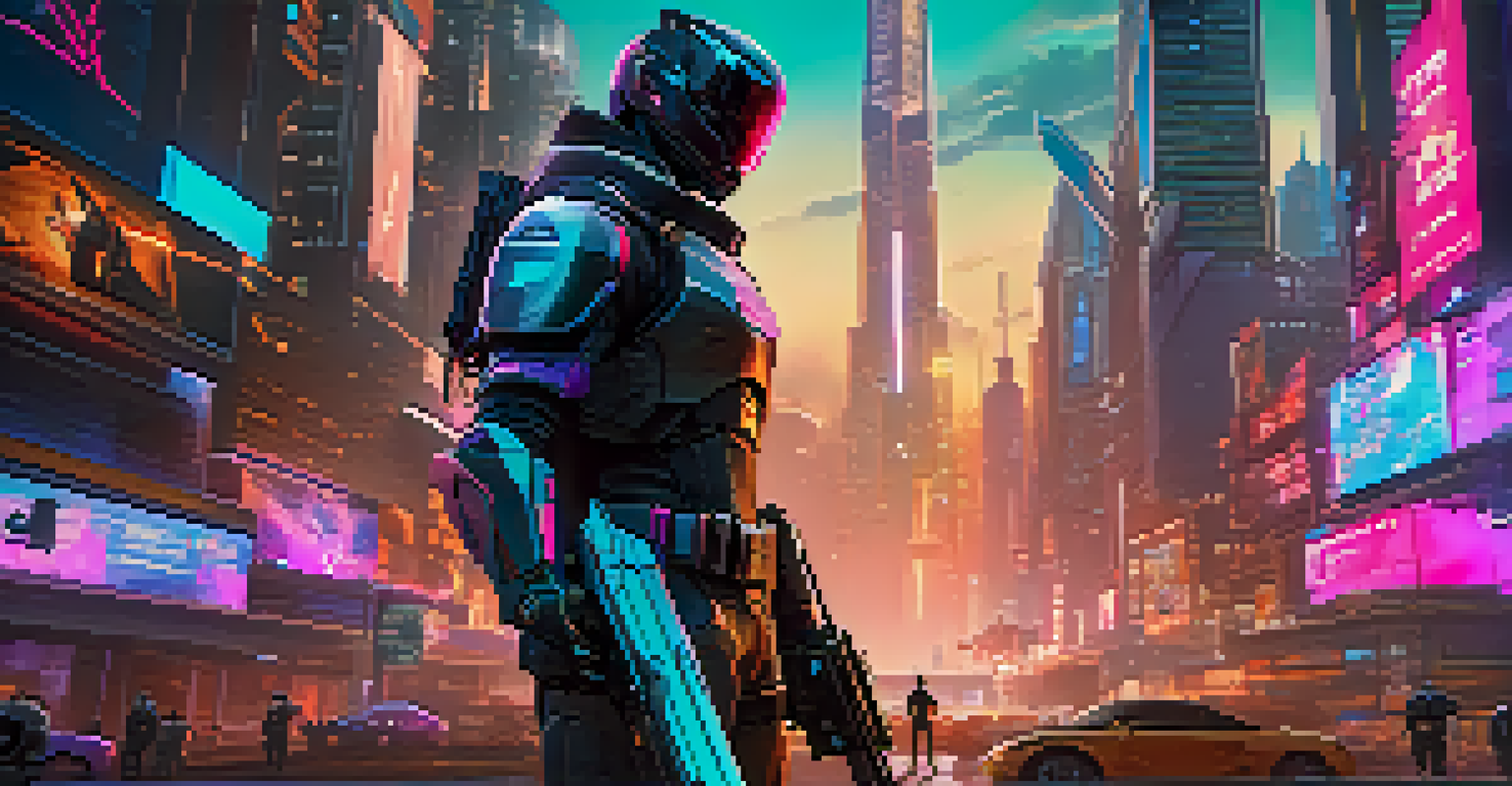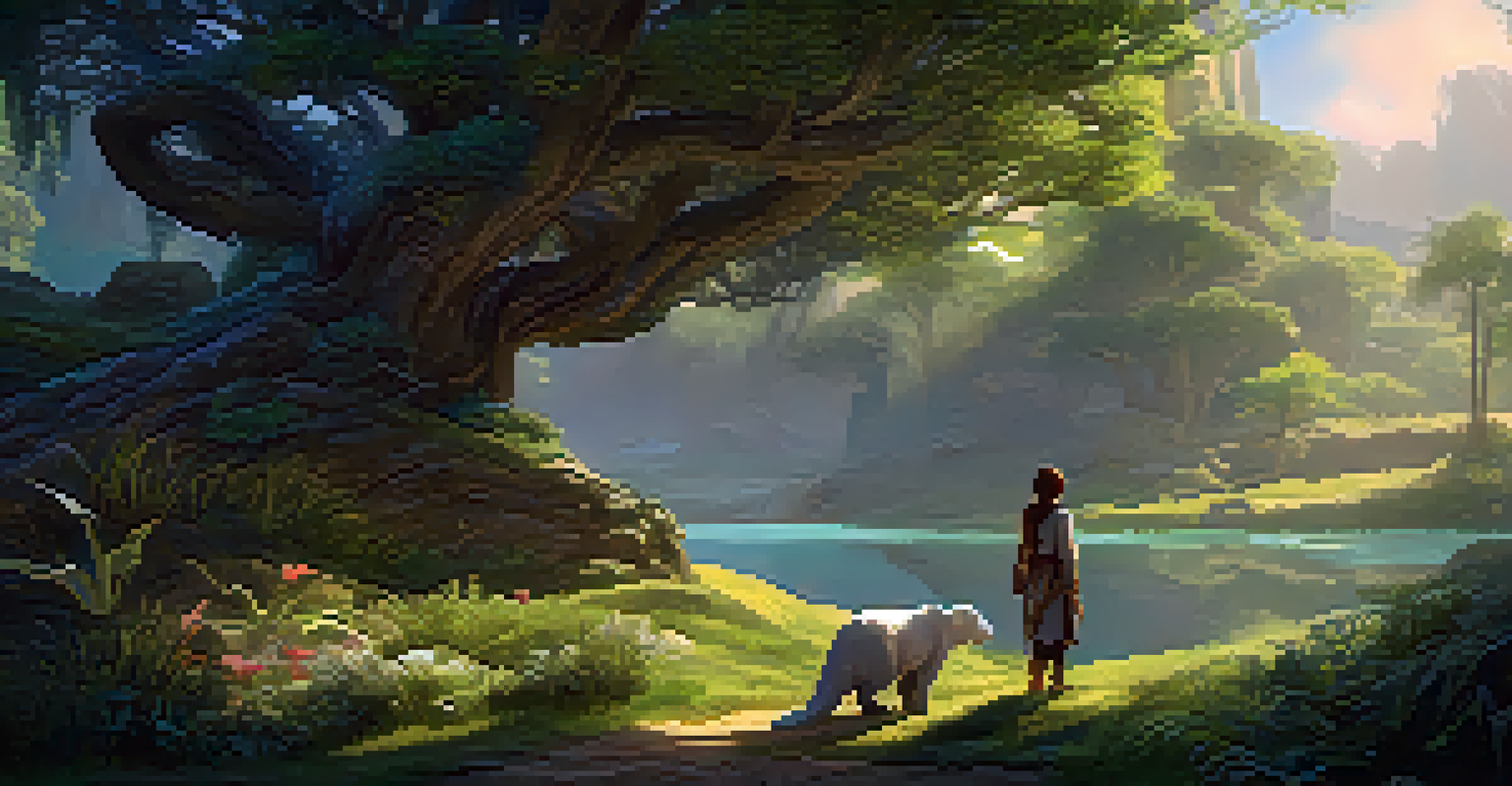How Hollywood's Blockbusters Shape Video Game Storytelling

The Intersection of Film and Gaming: A Natural Evolution
As technology progresses, the lines between film and gaming continue to blur. Both mediums now share a common goal: to tell captivating stories that resonate with audiences. This synergy has led to a new wave of video games that borrow techniques and narrative structures from blockbuster films.
Video games are the ultimate empathy machine.
Think of it as a conversation where each side learns from the other. For instance, the cinematic cutscenes in games like 'The Last of Us' or 'God of War' are heavily influenced by film storytelling, creating a more immersive experience for players. This collaboration has resulted in richer narratives that engage players on a deeper emotional level.
Moreover, Hollywood’s significant investment in video game adaptations has further fueled this trend. Games are no longer seen as mere entertainment but as a legitimate storytelling medium that can rival films in depth and engagement.
Character Development: Lessons from Hollywood
One of the most notable influences of Hollywood on video games is character development. Just like in films, well-rounded characters with relatable motivations and arcs create a stronger connection with the audience. Games like 'Red Dead Redemption 2' exemplify this by crafting memorable characters who undergo profound transformations.

In film, character backstories are often revealed through dialogue and visual storytelling. Similarly, video games have adopted this approach, allowing players to explore characters' pasts through gameplay elements like flashbacks or collectibles. This depth adds layers to the narrative, making players care about the characters’ journeys.
Film Techniques Enhance Game Narratives
The integration of cinematic techniques in video games, such as character development and visual storytelling, enriches player engagement and emotional connection.
Furthermore, Hollywood's emphasis on diversity and representation has also seeped into the gaming world. As games start to feature a wider array of characters and stories, they not only reflect societal changes but also appeal to a broader audience.
Plot Structure: Borrowing from the Silver Screen
Hollywood blockbusters often follow specific plot structures, such as the three-act structure. This framework helps in pacing the story and building tension, which is equally relevant to video games. Titles like 'Uncharted' utilize these tried-and-true storytelling methods to enhance player engagement.
The best stories are the ones where you can feel the character's emotions.
In many games, players experience the narrative unfold in a manner similar to watching a film. For instance, games often start with an inciting incident that propels the protagonist into action, mirroring the setup of a movie. This familiar structure makes narratives more accessible, allowing players to easily follow along.
Moreover, the use of cliffhangers at the end of chapters or levels keeps players invested in the story, much like a movie's suspenseful ending. This technique not only encourages continued gameplay but also creates a sense of anticipation.
Visual Storytelling: Cinematic Techniques in Games
Visual storytelling is a powerful tool in both Hollywood and gaming. Filmmakers use camera angles, lighting, and composition to convey emotions, and game developers have begun to adopt similar techniques. Games like 'Horizon Zero Dawn' demonstrate how stunning visuals can enhance storytelling, creating an experience that feels cinematic.
The use of dynamic camera angles during key moments can evoke feelings similar to those experienced while watching a film. For example, a dramatic close-up during a pivotal scene can intensify emotional reactions, drawing players deeper into the narrative. This blending of visuals and storytelling creates a more immersive experience.
Player Choices Shape Unique Stories
Interactive storytelling in gaming allows players to make impactful decisions, creating personalized narratives that reflect the complexity often found in films.
Additionally, video games now utilize advanced graphics and animation technologies that allow for more expressive character movements and environments. As a result, players can feel the weight of a character's journey through visual cues, just as they would in a blockbuster film.
Emotional Engagement: The Power of Soundtracks
Music plays a crucial role in both films and video games, acting as an emotional catalyst that shapes the narrative experience. Just as Hollywood blockbusters use haunting scores to evoke feelings, video games have begun to incorporate similarly powerful soundtracks. Games like 'Journey' exemplify this, using music to convey emotion without dialogue.
An engaging soundtrack can heighten tension during critical moments, making players feel the stakes of their decisions. Think about how a sudden increase in tempo can make a player’s heart race during a boss battle, similar to how a film's score builds suspense. This emotional engagement enhances the storytelling experience.
Moreover, the collaboration between renowned composers from both industries has led to memorable soundtracks that elevate gaming narratives. These musical scores not only complement the gameplay but also leave a lasting impression on players, much like a catchy movie theme.
Narrative Choices: The Influence of Interactive Storytelling
The rise of interactive storytelling in video games has opened new avenues for narrative engagement, a trend influenced heavily by cinematic storytelling. Players are no longer just passive observers; they make choices that impact the direction of the story. This shift echoes the narrative complexity often seen in films, where character decisions drive the plot.
Games like 'Mass Effect' and 'Detroit: Become Human' showcase how player choices can lead to multiple endings and varied character arcs. This branching narrative structure creates a unique experience for each player, similar to how different viewers may interpret a film's story based on their perspectives.
Future Trends in Storytelling
The collaboration between Hollywood and gaming is set to expand, promising more diverse and immersive storytelling experiences as technology advances.
Additionally, the emotional weight of decisions in games fosters a deeper connection between players and the narrative. Just as films can leave audiences pondering their choices long after the credits roll, video games encourage players to reflect on their actions, enhancing the overall storytelling experience.
Future Trends: Where Hollywood and Gaming May Lead Us
As we look to the future, the collaboration between Hollywood and the gaming industry is poised to grow even stronger. With advancements in technology, we can expect even more cinematic experiences in video games, including virtual reality storytelling. This evolution will undoubtedly continue to blur the lines between the two mediums.
Moreover, as both industries strive for more authentic representation, we may see more diverse stories that resonate with a wider audience. This shift not only reflects societal changes but also enriches the narratives within both films and games, offering players and viewers a broader spectrum of experiences.

Ultimately, the ongoing dialogue between Hollywood and the gaming world will shape the future of storytelling, creating innovative narratives that captivate audiences across both platforms. The possibilities are endless, and we’re excited to see where this dynamic relationship takes us next.